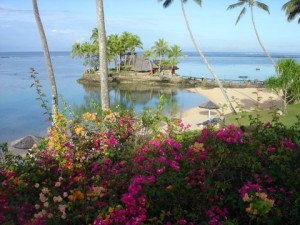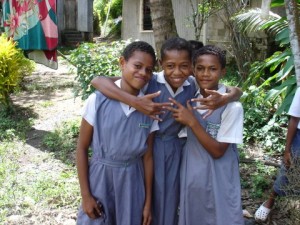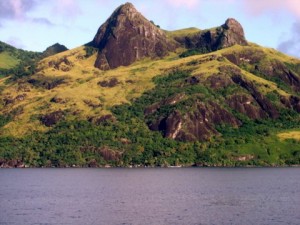Tourism Fiji recently announced a new branding campaign based on the claim that the Pacific island nation is the happiest place on earth.
The new Tourism Fiji slogan is “Fiji — where happiness finds you.” Tourism Fiji CEO Rick Hamilton noted the irony that while the “whole world is continually looking for happiness, actually it’s Fijians, the people who are trying the least, who have it the most.”
The new branding is based on a 2011 survey called the WinGallup Global Barometer of Happiness. The Fijian survey was conducted for WinGallup by the Tebbutt Research Group, while different groups surveyed 57 other nations around the world.
In Fiji, almost nine out of ten people said they were happy, compared to just 53 percent of the entire global sample who said they were happy.
Having been to Fiji twice, I’d say that Fijians do have lots to be happy about, starting with white-sand beaches, warm Pacific waters, palm trees, tropical breezes, abundant fruits, lush landscapes and all the stereotypical but highly attractive things that come to mind when you think of Fiji.
Most of the baby boomer travelers I know would love to go there, drawn by the name alone: “Fiji” conjures up visions of the exotic South Seas as much as any islands with the possible exceptions of “Tahiti” and “Bora Bora.”
Everywhere you go in Fiji, you are greeted with the word “bula,” which can mean anything from hello or welcome to goodbye and probably just about anything else you want it to. It’s the first word you hear when you get off the plane in Fiji and the last word you hear when you re-board to leave.
If you pass a Fijian without hearing or saying “bula,” usually accompanied by a smile, you aren’t paying attention.
“The locals make our visitors smile and feel happy,” Hamilton notes.
The idea of presenting Fiji as the happiest place on earth, then, does have some justification. The problem is that there are a number of other surveys, some taken more recently than the WinGallup survey, that show completely different results for the happiest nations.
A 2013 UN-sponsored survey conducted in part by Columbia University’s Earth Institute, for example, is heavily weighted toward northern Europe. It ranks Denmark as the happiest nation, followed by Norway, Switzerland, the Netherlands and Sweden.
Meanwhile, the Happy Planet Index came up with a different set of countries, mostly in Central America: Costa Rica finishing first, followed by Vietnam, Colombia, Belize and El Salvador.
And yet another Gallup survey put Panama in first place, followed by Paraguay, El Salvador, Venezuela, Trinidad and Tobago, and Thailand.
If all the winners claimed to be the happiest country on earth, it could get crowded at the top, and might even lead to some kind of world war of words among national tourism agencies.
But more power to Fiji for stepping into the fray and betting its tourism promotion chips on the happiness gambit.
“None of the other [island nations] make you feel the way Fiji does,” Hamilton contends. “We wanted to demonstrate why Fiji is the happiest place in the world and ultimately to show how this happiness can be transferred to our visitors.”
One thing is certain: Fiji won’t have to compete with the United States in the happiness department: the U.S. finished well out of the running in all of these surveys.
Maybe more baby boomer travelers — and all Americans — could benefit from a trip to Fiji.
Bula!
Be sure to download my free report, “How to Ride the Coming Wave of Boomers,” available here. It’s all about the best ways to market travel to baby boomers — the biggest-spending group of travelers the world has ever seen. It’s also the easiest way to subscribe to my blog, so you won’t miss a posting. Thanks!













Leave a Reply